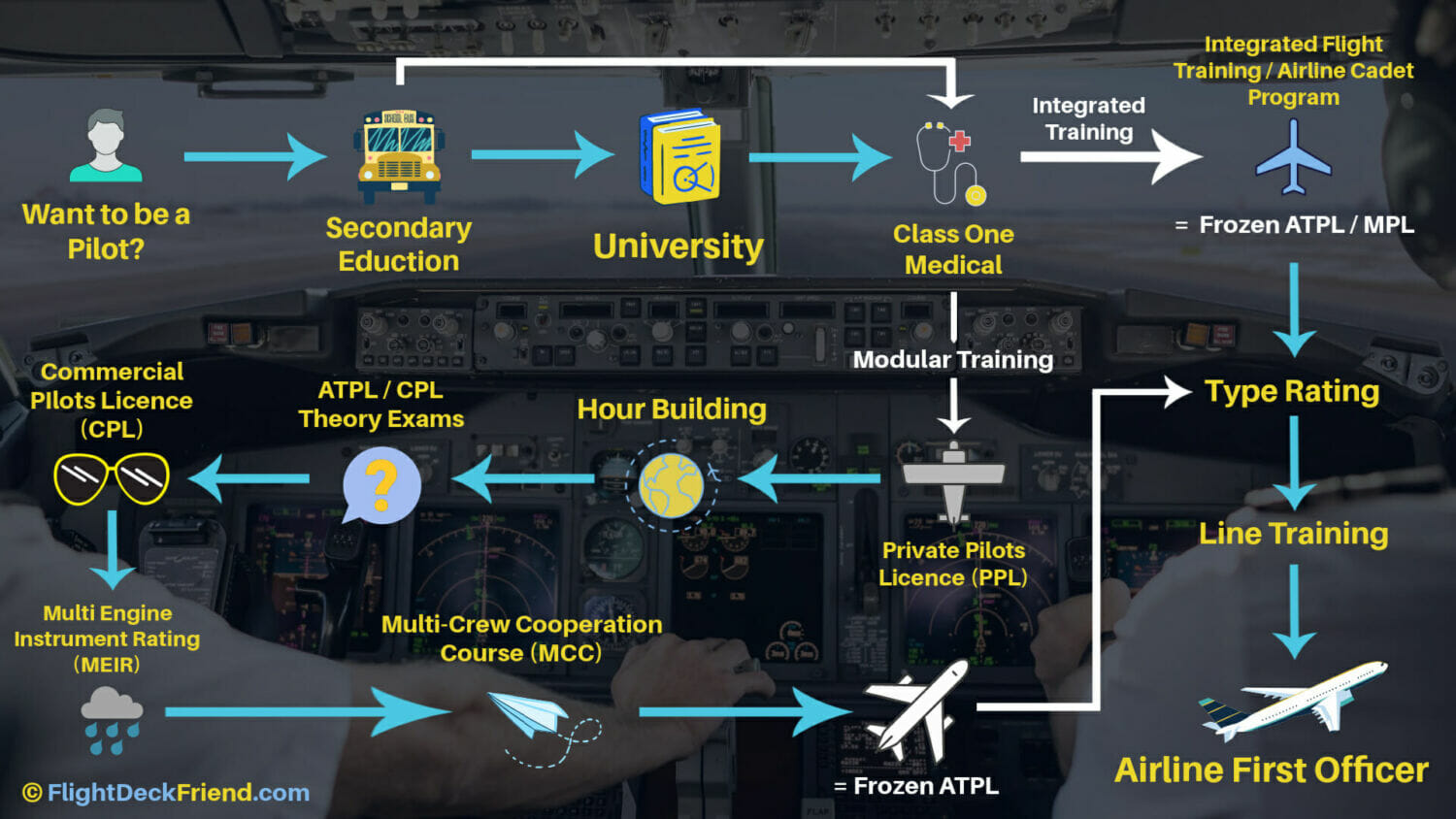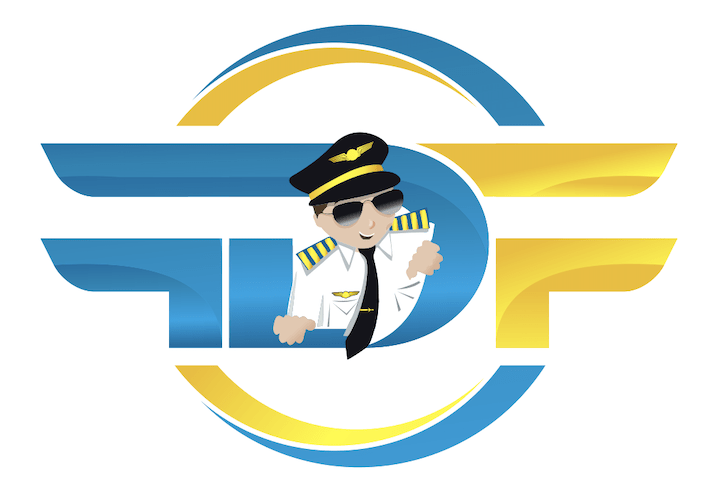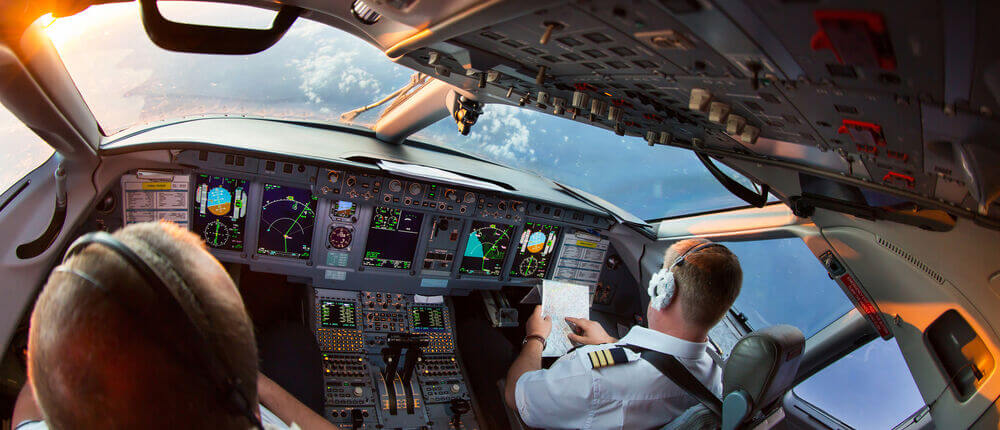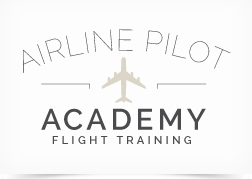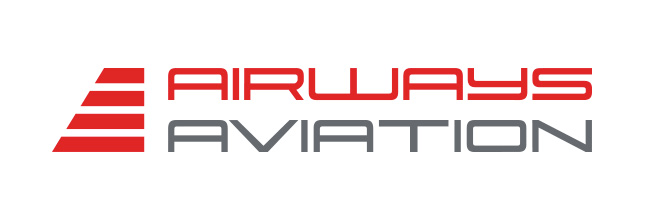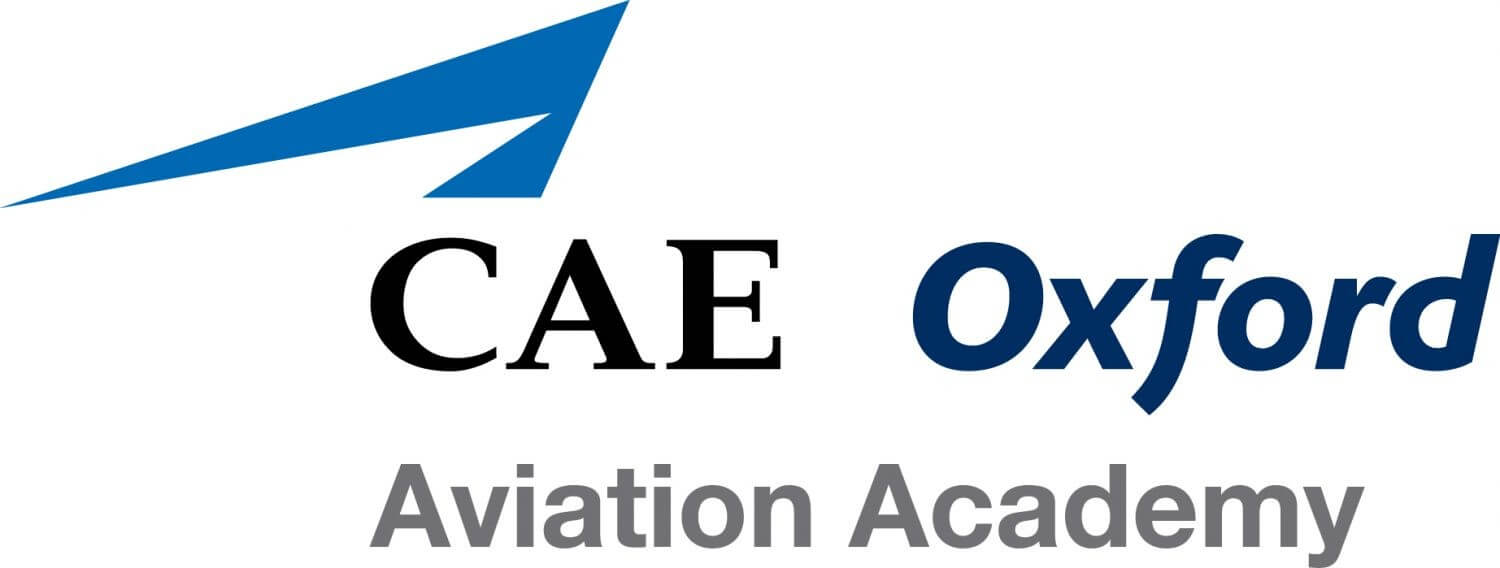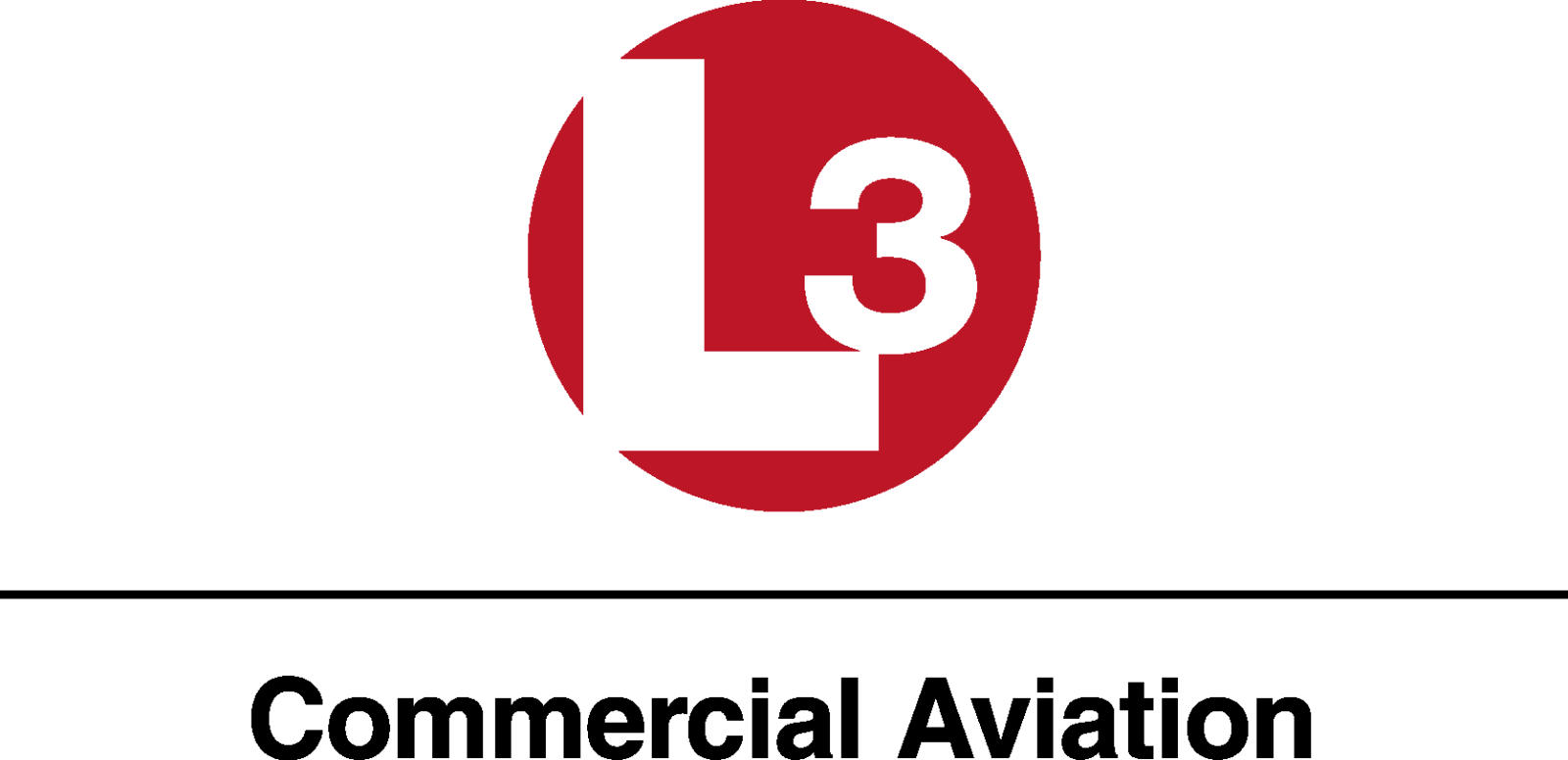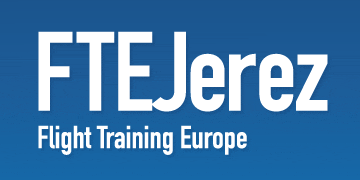Integrated vs Modular Flight Training
Integrated vs Modular Flight Training – Which is Better?
There are distinct differences between integrated and modular flight training routes but neither flight training footprint is necessarily better than the other. Deciding on which method of training to complete very much depends on your own personal circumstances.
As a general overview, integrated flight training is more expenses but takes a shorter amount of time making it more intensive which appeals to the airline.
On the other hand, modular flight training is normally substantially cheaper, may take more time to complete and offers much greater flexibility as to how and when you complete your training.
Integrated Flight Training Overview
Integrated training basically means you carry out all of your commercial pilot training on a full-time course at an approved flight school. It takes you from having zero hours flying time to holding a frozen ATPL in around 14-18 months. The training is intensive requiring complete commitment from start to finish.
Although the course is designed for zero-hour flight time students, it does not preclude those with previous flying experience from applying. In fact, a few hours of previous instruction may be beneficial. Many students enrol on an integrated flight training course having already obtained their PPL.
In the UK integrated training is specifically approved and regulated by the CAA and in Europe by EASA. There used to be the three “big” flight schools that offer this type of flight training; Oxford Aviation Academy (OAA), Flight Training Europe Jerez (FTEJerez), and L3 Aviation Academy, however in recent years, this list has grown into a more comprehensive list of training providers.
All the integrated schools require that you pass a selection process involving aptitude testing, Maths and English tests, group exercises and a competency interview.
What Airlines Want…
Many airlines say they prefer graduates from integrated flight school. They suggested that if you can keep up with the fast-paced training and very steep learning curve associated with integrated training then the airline can be fairly confident that you will not have any problems with the subsequent type rating and line training.
Some airlines only recruit low hour cadets from the four CAA approved integrated schools. Airlines such as Virgin Atlantic, easyJet, TUI, Emirates and Qatar Airways all run mentored courses though such courses.
Integrated training is geared up to prepare you for a job as a commercial airline pilot from day one. You are required to wear uniform, and taught to operate the aircraft in a similar manner (as far as practicable) to that of a commercial airliner.
The training is well structured and the standard is regarded as very high. The structure of the courses varies from school to school but all culminate of taught ground school theory subjects, single engine elementary flight training before moving onto the more advanced instrument flight rules training on the multi-engine.
What Flight Training School is Right for You?
The best way to choose which school is right for you is to go and visit them. Each offers a different training environment and facilities, and the layout of the syllabus tend to have some differences. For example, at Flight Training Europe (FTEJerez) the students have their accommodation and catering on campus. This can be very useful in terms of practicality and convenience. Not having to worry about cooking dinner after a long day of ground school, or not hanging around flight operations all day having to wait for the weather to clear up are very handy commodities.
You also have benefits of an onsite swimming pool and bar making relaxing on your days off pretty easy. Others may find this to be a bit claustrophobic as during the fourteen months of training you get very little time off and so much time living and working in one place, especially abroad, can be daunting.
Integrated Flight Training Advantages
- Some airlines recruit directly from integrated flight training organisations. For example, easyJet recruit directly from OAA and L3 Aviation Academy.
- After completing training, you are often placed in a holding pool until an airline recruits you.
- It’s an intensive course which the airlines like as it demonstrates you can cope with a steep learning curve.
- All of the training is done with one flight training organisation. This means an accurate record can be kept of your flight training performance, something which the airlines value.
- Integrated flight training organisations must be approved by the state regulator. This pretty much guarantees a high standard of pilot training.
- The quality and consistency of the flight training is often better.
- You will probably get your ATPL(f) licence quicker.
- It takes from you zero flying experience to having the licences needed to pilot a commercial aircraft as a First Officer.
- There are potentially additional accreditations that might be available through an integrated flight training course, such as bolt on aviation degrees allowing you to obtain a BSc at the same time.
- Flight schools often provide support to their graduates until they secure a job with an airline. Some schools will offer assessment preparation sessions and practice simulator assessments.
- Some flight schools have performance guarantee schemes due to the faith in their selection process. This means if you didn’t reach the required standard to gain various licences, you could get your money back.
Integrated Flight Training Disadvantages
- Usually it’s much more expensive than the modular pilot training route.
- You complete the training to a strict timetable i.e. less flexibility.
- In reality, you are unable to work in any other role whilst on the course so you would need the money or loan to finance the course upfront.
- There is more risk in the sense of if there was a significant global event that affected airline recruitment (like the Covid-19 pandemic), you will be committed to continue with your training even if the immediate job prospects looked bleak.
- You can’t pay as you go in the traditional sense. Rather you pay some upfront and then in installments during the flight training.
- The finances required to pay for the pilot training can be difficult or impossible for some people to secure.
If you are interested in Integrated Flight Training, you can check out our specific Integrated Flight Training Organisation List. This will help you decide which pilot training school is right for you.
Modular Flight Training Overview
Modular flight training is traditionally cheaper than integrated. You can choose where and when you complete your training which gives you the benefit of being able to budget appropriately, paying for you training as you go, rather than spending a large upfront sum that is required for integrated courses. You can do it as quickly or slowly as you like, which gives you the opportunity to work while getting your various licences.
The hour building required for the Commercial Pilots Licence (CPL) issue can be completed in other countries, with many people choosing to do this in the United States because of the cheaper cost of flying.
The typical route for modular training is as follows:
- Private Pilots Licence (PPL)
- Hour Building
- Airline Transport Pilot Licence (ATPL) Theoretical Examinations
- Commercial Pilots Licence (CPL)
- Instrument Rating (IR)
- Multi Crew Cooperation Course (MCC)
So why doesn’t everyone go through the modular route if it’s cheaper?
- Historically, many airlines have preferred integrated students because of the quality and intensity of the training on such a course. This can’t be guaranteed through the modular route.
- No links with airlines. Most integrated schools have links with airlines, allowing the schools to recommend students to a specific airline when they perform to a high standard.
Modular Flight Training Advantages
- It can be much cheaper than an integrated course.
- You can complete it in your own time alongside full or part time employment.
- You can train at your own pace.
- Less risk in that if there is a substantial downturn which affects the airlines, you can stop the training and continue at a later date
- You aren’t committed to work for a particular company, which might be useful if lots of airlines are recruiting when you complete your training – you can be a bit fussier about who you apply to.
Modular Flight Training Disadvantages
- It takes longer to complete.
- It can be difficult to maintain consistency through having different instructors at different schools.
- The training emphasis isn’t always on becoming an airline pilot and therefore the training can be less focussed on the end result.
- Generally speaking, modular flight training organisations tend not to have employment ties with commercial airlines.
- Arguably, it requires more discipline as there is more emphasis on self study.
- Many integrated schools recognise they are treating airline pilots from day one, this might not be the case at modular flight schools.
- Historically it has been harder to modular students to secure employment compared to integrated students. Modular students to get jobs, but it’s probably a bit harder to do so as you can’t benefit from the airline ties of a big flight training organisation.
Mentored Airline Cadetship
The majority of airline run pilot training schemes are known as “mentored” programs. The airline selects its cadets to enroll them onto an integrated flight training course where their progress throughout the course is monitored and evaluated by both airline and flight school alike.
The airline will expect a high standard to be met, and subject to this being achieved, the cadets are usually taken on by the airline at the end of their training. Despite being sent to carry out the flight training on behalf of airline, a cadet pilot course requires an outlay of around £100,000 and the onus to secure such finances lays with the student not the airline.
The Risks Associated with Flight Training
Up until the global economic downturn in 2008, if like most people, you didn’t have a spare eighty thousand pounds sitting in your bank account, the finances could be acquired though an unsecured loan from several different banks.
Unfortunately banks now require security for such a loan in the form of an asset(s) such as property. For many people who are looking to commence their training, such assets are not easily, if at all accessible.
This has made the industry somewhat elitist, as it precludes those from a less privileged background from obtaining the resources to commence the training. Some people are fortunate enough to have parents that may be willing to provide security for the loan in terms of the family home, but this in itself is a hugely risky commitment.
Finance
If you were to fail to secure a job after completing training and furthermore, (you or the guarantor) were not in employment which would ensure loan repayments of between £700 – £1200 a month for around ten years, the security placed on the loan may be repossessed. This has happened in the past and will continue to occur in the future, and this is why it is vital to have a backup plan before making such a huge commitment.
Even if the finances are in place, you must think long and hard about the prospect of parting with £100,000 to chase a dream that may never happen. This is quite a sobering prospect, but there are people who take the “it won’t happen to me” attitude, only to be left crippled with debt. The fact is that there are more fATPL holders than commercial pilot jobs, and as such there is always a risk that one will never achieve their goal of sitting in the right hand seat of a commercial jet.
Before committing to your commercial flight training, we strongly recommend you have a read of our “Employment Prospects After Flight Training” article.
Integrated Flight Training Organisations
Integrated Flight Training Organisation Directory
If you’ve decided to go down the integrated flight training route, rather than modular, as a “White Tail” (not mentored or sponsored by a specific airline), choosing which flight schools is best for you can be a tough call. We’d recommend visiting and talking to the various flight schools to see which best suits you.
Integrated flight schools, which are EASA/CAA regulated ‘Approved Training Organisations’ (ATOs), have the advantage of having close links with airlines, which can lead to a job on completion of training. Airlines which offer cadet pilot mentored programs will typically place their cadets on one of these integrated courses. We would recommend applying for an airline mentored place at one of these integrated flight schools before applying as a “White Tail” as this will provide the most secure way into the industry. The latest cadet pilot programs can be found here.
Whilst the flight schools provide a set course price, the establishments tend to differ with what’s included in this price. For example some include accommodation, whilst others don’t. It is important to take such variables into account when considering which is the best option for you.
Flight School Entry Requirements
The typical criteria to be eligible to apply to an integrated flight training program within Europe is as follows:
- Be 17 years old or greater
- Hold a valid Class One medical
- Be fluent in English language (written and spoken)
- Have a secondary school education or greater with 5 grades A-C
- Have the right to live and work in the EU
But this will differ between each organisation.
Integrated Flight School Checklist
We’ve written out a checklist to help you choose the flight training organisation. Before you make your decision on which flight school to attend, we’d recommend you consider the following:
- What is the total price?
- What does the total price include? Equipment, uniform etc…
- Are the payments made in instalments? Be very careful about paying for the full cost of your training upfront. If the training school goes out of business half way through your training, you will have a very difficult time trying to recover the money. Most integrated flight training schools will allow you to pay monthly instalments as you progress.
- What happens if you require any additional training? What is the cost of this?
- Does the price include any exam / flight test retakes?
- How long does the course take?
- What happens if it takes longer because of bad weather or other unforeseen issues? Who is responsible for additional accommodation costs etc?
- Where does the training occur (training is often split between countries due to reduced cost of aircraft rental / landing fees / good weather etc…)
- Is accommodation included throughout the various stages of training?
- If accommodation isn’t included, do they support you in finding suitable accommodation?
- What ties does the school have with airlines?
- What is the school’s placement record with airlines like? Can they provide any statistics?
- What do current students think about the training they are receiving?
- Do they offer support in seeking employment after obtaining your licences?
- Is an airline assessment preparation day included in the course? This is something many flight schools now offer.
Integrated Flight School Directory
Airline Pilot Academy (APA)
Updated: January 2021
Duration: Approximately 17 months
Price: £86,565 (including accommodation and transport costs)
Location: Bournemouth, Florida, Utrecht
Airways Aviation
Updated: January 2021
Duration: Approximately 71 weeks
Price: €95,000 excluding accomodation
Location: Montpellier, France
Baltic Aviation Academy (BAA)
Updated: January 2021
Duration: Approx 2 years
Price: Price on application
Location: Lithuania
Notes: Accommodation not included
CAE Oxford Aviation Academy (OAA)
Updated: January 2021
Duration: Approximately 24 months
Price: £90,000 excluding accommodation
Location: Oxford, UK & Arizona, US
L3 Aviation Academy
Updated: January 2021
Duration: 18 to 24 months
Location: United Kingdom or Portugal
Price: £86,000 excluding living expenses
European Flight Training (EFT)
Updated: January 2021
Duration: 12 – 15 months
Price: Price on application. Accommodation included.
Location: Florida, USA
Flying Time Aviation (FTA)
Updated: January 2021
Duration: Not stated (previouslly 16 months)
Price: £87,950
Location: Brighton, UK and Teruel, Spain
FTEJerez
Updated: January 2021
Duration: 62 weeks
Price: €119,500 – Accommodation and full board included
Location: Jerez, Spain
QUALITY FLY
Updated: November 2023
Duration: 78 weeks
Price: €67,750.00 – Accommodation available at €550.00 a month
Location: Madrid, Spain
Stapleford Flight Training – Jetway Integrated
Updated: January 2021
Duration: Not specified
Price: £74,995 – Accommodation not included
Location: Stapleford, UK
How Old Is Too Old – Flight Training
When are you too old to start commercial flight training?
It’s rare for people to start their commercial flight training over the age of forty, but it’s still achievable. Plenty of people spend many years saving the funds required to pay for their flight training and end up commencing their flight training at an age anywhere from their late twenties all the way through their forties. If you are asking the question ‘Am I Too Old?’ the answer is probably not if you really want it enough.
Background to Age vs Flight Training
For some it might be a case of saving until there is enough money in the bank to pay for training, for others it’s the desire to move on from a 9-5 office job and a pursue a career they never really thought it was possible to achieve; there are plenty of people who decide to start their flying careers later in life.
The reality is that you only become too old to start flight training when you can no longer hold a class one medical. However, if you are starting your training over the age of around forty, what you are looking to achieve takes some serious consideration. Like most decisions, deciding whether it is a worthwhile investment is very specific to individual circumstances taking into consideration current and future finances and family commitments.
When deciding whether you are too old to start flight training or not, ask yourself a few questions…
Can I afford not to get a job at the end of training?
If you have already saved the money to fund your flight training, rather than sourcing the finances (such as re-mortgaging the house) through a substantial loan, the risk and burden of not getting a job at the end of your flight training is probably less significant as you don’t have the worry about the need to make significant loan repayments.
If you don’t manage to land a flying job straight away, what is your contingency plan. Can you revert back to previous employment? Will you be able to afford the loan repayments if you don’t get a flying job straight away?
Do I have a career/job to fall back on if I don’t make it?
If you’ve sourced a loan or re-mortgaged a house, do you have a good career to fall back on to keep paying the bills if you don’t get a job as a First Officer when you finish training?
Do I have a good idea about the realities of the day to day life of an airline pilot?
Make sure you are well researched on what the life style realities of an airline pilot are. Speak to current pilots about their lifestyle and compare it to your quality of life. Weekends, Bank Holidays, Christmas’s and are all normal working days at most airlines which could affect your family or social life considerably.
If you and your family are used to a Monday – Friday 9 to 5 job, being away from home for a few days at a time, working weekends, late nights and early mornings might come as a bit of shock.
How will I feel about spending a vast sum of money on a licence I might never use?
Will you live with regret it if you spend all your savings on flight training but never get a flying job at the end of it? Might you be better off simply getting a Private Pilot’s Licence and enjoying flying as a hobby?
Do I have the support of my family? Do they understand the implications (time and financial) of changing careers?
If you have a family, the decision to start commercial flight training will affect everyone. Make sure they understand the various commitments that will be required of you in your new career.
Am I prepared to take a pay cut?
If you’re in a well paid job, you may well take a pay cut to become a First Officer. You may even have to pay another £25,000 on a type rating should you be offered a job. How will this affect your quality of life? Might it be better to get a PPL and fly for fun?
Is moving countries feasible to find a job?
Airline pilot jobs in the UK are often few and far between for inexperienced pilots. In the event of there being no jobs available, are you prepared to relocate you and your family to another country?
How is my salary effected?
When joining an airline at the age of forty-five, your potential future earnings are considerably lower than that of a twenty-five-year-old. With a likely investment of between £50,000 – £100,000 in your training, making a financial return on your investment might require you to go straight into a well-paid First Officer position. This is by no means guaranteed, no matter which method of training you choose.
A full-time training course would mean the loss of around 2 years earnings. You need to factor this into your total costings and budget.
Impact of Training
The time investment and subsequent impact on family life also has the potential to be significant. If you were to choose an integrated course, maintaining a normal family life would be very difficult given its intensity and commitment required. A modular course would offer more flexibility in this respect, and you would also have the benefit of being able to complete the training at your own pace whilst being in employment. This route obviously takes longer and requires significant self-discipline.
Career Progression
If your dream is to Captain a long-haul jet like the B777 or A380, you’re going have less chance of achieving this when starting your aviation career in later years. A forty-five-year-old has a maximum of twenty years left of a flying career, assuming your medical is maintained. At some long-haul airlines, it can take 15 to 20 years to be promoted to Captain so you need to be realistic about what you can expect in terms of career progression.
Discrimination
In Europe it is illegal for an employer to discriminate against age. Whilst European airlines should not place an age limitation on applications, there is speculation that some would prefer to recruit younger First Officers where possible.
Whilst it’s open to debate, some people suggest that younger cadets learn at a quicker pace and are better at taking on new information. Younger candidates are less likely to have family commitments and are therefore more flexible with regards to lifestyle.
When airlines recruit cadets, they are looking to recruit future captains. If on application you’re of an age where you are unlikely to ever reach command, would the airline prefer a younger candidate. They couldn’t discriminate against age legally, but it’s often thought that it happens.
Age Can be Valuable
All of the above being said, life experience and maturity are desirable attributes for pilots and airlines should therefore always be looking for a well-rounded mix of pilots from all demographics.
Older pilots who have worked elsewhere may appreciate the job more than those pilots who started flying at a very young age and never really experienced a ‘proper job’.
Pilot Licences Explained
What licences you need to become a pilot
Gaining a clear understanding of what licences you need to become a First Officer with an airline requires a bit of reading. In short, to operate as a commercial airline pilot you need to hold either a licence called a frozen Air Transport Licence (ATPL) or an Multi-Crew Pilot Licence (MPL). We expanded on the details of each licence below to help give you a clear idea of the licences required to become a commercial airline pilot
Multi-Crew Pilot Licence (MPL)
An MPL allows you to operate as a First Officer / Co-pilot on a commercial passenger aircraft. The licence is a relatively new concept which has been introduced alongside the traditional frozen ATPL licence.
The biggest difference between an MPL and fATPL licence is that you can only complete MPL training with an approved training organisation having already been selected to join an airline specific training course (such as the easyJet or British Airways MPL Cadet programs). You can’t complete an MPL course unless you have been specifically selected to complete the course by an airline.
The practical difference between an MPL and a fATPL is the training syllabus. MPL training puts greater emphasis on airline specific, multi-crew training, with less time spent training the more traditional single pilot flying skills in light aircraft. As a result, do you do less real flying and spend more time in the simulator. You still learn the core flying skills, but more quickly progress towards the concept of multi-crew operations and instrument flying.
As a result, you don’t ever obtain a Private Pilot’s Licence (PPL) or a Commercial Pilots Licence (CPL) which is needed to operate commercially in a single pilot role.
You hold an MPL licence until you achieve 1500 hours of flight time, at which point you upgrade your licence to a full ATPL.
Holding an MPL can make changing jobs difficult, until you have upgraded to a full ATPL. An MPL holder must continue working for their sponsored airline and it is not easily transferable. It will typically take you about 2-3 years to gain the amount of flight time. This isn’t a problem during normal times as you will have been bonded to the airline who’s training program you were accepted onto. However, it could be an issue if the worst happens such as redundancy occurring due to an event like the Covid-19 pandemic.
Air Transport Pilot Licence (ATPL)
The more traditional route to becoming a Co-pilot / First Officer is to obtain a frozen Air Transport Pilots Licence (fATPL).
The fATPL isn’t a standalone licence, rather it’s a widely accepted summary that you have all the individual licences you need to operate as a First Officer on a commercial transport jet with an airline.
The fATPL consists of a number of individual licences and endorsements, all of which must be obtained in order to have a fATPL. This consists of
- 14 ground school examinations (ATPL Theoretical Exams)
- Commercial Pilots Licence (CPL)
- Multi Engine Instrument Rating (MEIR)
- Multi Crew Co-operation Course (MCC)
An ATPL is not as restrictive as an MPL in that you can free move between airlines (although you may require a new type rating as described later) and you can operate smaller passenger aircraft (8 seats or less) as a single pilot should you wish.
The frozen ATPL becomes “unfrozen” i.e., a full ATPL, when you have completed a total of 1500 hours total flying time, of which 500 hours must be multi crew environment i.e. flown in an aircraft which requires both a captain and first officer. You must be aged 21 or over for the licence to be unfrozen. You must hold a full ATPL to operate as a Captain of a commercial aircraft.
You can obtain all the licences and exams required to hold a fATPL at a flight school through either integrated or modular training.
Some airlines will also require you to have a type rating as a minimum requirement. This is a stand-alone endorsement to add to your fATPL which allows you to operate a specific type of jet transport category aircraft. This is described in more detail later.
Private Pilots Licence (PPL)
The entry level licence is called a Private Pilot’s Licence (PPL). This licence entitles the holder to exercise privileges as pilot in command of a light single piston aircraft (this basically means you can fly a small aircraft by yourself). The minimum age to hold a PPL is 17 years old. To obtain this, you need to complete a minimum of 45 flying hours, 10 of which must be solo hours, and 5 of which can be in a certified flight simulator. There are also 6 ground school exams which must be sat, of which the pass mark is 75%. Once your instructor deems you are ready and have met the minimum requirements, you will sit a flying test with a CAA examiner (it’s a bit like a driving test but in an aircraft). Although 45 hours is the minimum requirement, most people will generally need about 60-70 hours to reach the sufficient standard, some people needing more and some less. Again, depending on the person, the aim is to fly your first solo flight after just 15 hours of tuition.
It is not a requirement that you hold a PPL before obtaining a Commercial Pilots Licence (CPL), although many would argue that it is a good idea to do so in order to assesses whether you have the aptitude for it and more importantly whether you actually enjoy flying as much as you thought you would.
Commercial Pilots Licence (CPL)
The CPL is basically a more advanced PPL, requiring flying accuracy and a higher standard of airmanship. The holder of a CPL is able to act as pilot in command of a small piston engine aircraft that holds less than 9 passengers for commercial purposes such as revenue flights in visual conditions (VMC). The minimum age to hold a CPL is 18 years old.
The CPL is valid for multi engine aircraft only if the CPL skills test is passed in a multi engine aircraft, otherwise privileges are restricted to single engine aircraft. A CPL holder may only operate the aircraft in what are referred to as visual meteorological conditions (VMC – this basically means clear of cloud with the ground always in sight in good visibility). In order to be eligible to sit the CPL skills test with an examiner, the student must have completed 70 hours as pilot in command (or pilot in command under supervision) and flown the cross-country qualifier which involves a solo flight over 300 nautical miles, landing at two other airfields than the one you departed from. You obtain a CPL by passing a CPL skills test with an authorised examiner.
ATPL Theoretical Examinations (Theory)
You must have also of passed the following 14 ATPL theoretical examinations with a pass mark of 75% or greater. The ATPL theory subjects consist of the following:
- Air Law
- Aircraft General Knowledge – Airframe/Systems/Powerplant
- Aircraft General Knowledge – Instrumentation
- Mass and Balance
- Performance,
- Flight Planning and Monitoring,
- Human Performance,
- Meteorology,
- General Navigation,
- Radio Navigation,
- Operational Procedures,
- Principles of Flight,
- Visual Flight Rules (VFR) Communications.
- Instrument Flight Rules (IFR) Communications. (Only required to hold an IR)
A number of airlines regularly stipulate their preference for candidates who achieved over an 85% average pass mark, so in reality, this is the minimum you should be aiming for.
Instrument Rating (IR)
Fly an aircraft in conditions where you can’t see the ground, such as in or above cloud is referred to instrument meteorological conditions (IMC). In these conditions, you can’t fly the plane by looking out the window you have to fly through reference to the aircraft’s instruments without. This is called Instrument Flight Rules (IFR). In order to be qualified to operate IFR, you must first hold an Instrument Rating (IR). You can complete the instrument rating on either a single or multi engine aircraft, but to operate for an airline, you specifically need to hold a Multi Engine Instrument Rating (MEIR).
When training for the instrument rating, the instructor will place special screens up in the windshield of the aircraft, or the student will wear special goggles to ensure the student can’t see outside. The screens go up at about 400 feet above ground level and are removed when coming into land at about the same height. After take-off, the student must navigate only using the aircraft instruments and radio beacons on a predetermined routing. A typical route involves navigating to another airfield, making an instrument approach followed by carrying out a missed approach before navigating back to the departure aerodrome to land.
During this phase of training, much emphasis is placed on the student’s pilot in command capabilities, with a lot of training being conducted as Pilot in Command Under Supervision (PICUS). This basically means that whilst the instructor has the overall legal responsibility of the flight, the student is encouraged to act as the Pilot in Command (Captain).
In addition to the theoretical examinations required to pass hold a CPL, you must also pass the IFR Communications theoretical examination before obtaining your MEIR.
To obtain an IR you must have completed a minimum of 50 hours cross country flying under instrument flight rules (IFR) as pilot in command. When the candidate is deemed ready, he/she must complete a mock skills test (called a 170A) followed by an official skills test with an approved instrument rating examiner. The test requires you to fly a number of exercises with reference only to the aircraft instrumentation, including the routing as described as above.
Multi-Crew Cooperation Course (MCC)
The MCC phase of your training is designed to help make the transition from single pilot operation to multi pilot operation. Just about all commercial aircraft are operated with a minimum of two flight crew, a Captain and a First Officer, and have to work together effectively to ensure the safety of the operation.
The MCC course is comprises of both theoretical training and practical simulator training. The simulator used is typically a widely operated commercial aircraft such as a Boeing 737 or Airbus 320.
The course places a large emphasis on non-technical Crew Resource Management (CRM) skills such as decision making, teamwork and communication. It is the first time you are introduced to multi-crew standard operating procedures (SOPs) in an airline environment. The course usually consists of around 20 simulator hours and is very intense.
Some training organisations also include a Jet Orientation Course (JOC) as part of the MCC course. This shorter course is used to help develop the manual flight and automation managed skills needed to operate a large commercial jet aircraft.
Type Rating (TR)
A type rating is the endorsement to operate a specific commercial aircraft. The type rating has traditionally been provided by an airline once offered a job with that airline, but it is now becoming more common for the candidate to pay for the type rating him/herself when offered a job, or on completion of the ATPL training to become more employable.
A type rating is required to operate a specific aircraft that meets any of these requirements:
- Carries more than 9 passengers
- Has a maximum take-off weight of more than 5,900 kilograms
- Is a jet aircraft
To commence a type rating the candidate must have a valid instrument rating and have passed all 14 of the theoretical examinations.
One person can hold a maximum of two type ratings at any one time. There are some generic type ratings, for example a type rating on the Airbus A320 allows the holder to operate the A318, A319, A320 and A321. Similarly, completing a type rating on the Boeing 737 NG allows the holder to operate any of the B737 series, both classic and next generation (300-900).
Base Training
After completing your type rating, you’re ready to fly the aircaft for the first time. You take an empty aircraft up, and complete around 6 takes offs and landings (“touch and go’s) with a training captain. If you manage to complete the take-offs and landings to a good standard, the next time you fly the jet will be with passengers on board on day one of your Line Training.
Line Training
Line training is where you operate the aircraft as part of normal airline operations (i.e. with passengers onboard) but with a Captain who holds special training qualifications (termed a ‘Training Captain’) who is there to provide training, supervision and mentorship.
Line Training is the final phase of your flight training carried out to bring you up to “line standard”. Prior to this you will have only flown the aircraft once during your base training without passengers.
Line training typically takes between 30 to 80 sectors (flights) and you are signed off when you are deemed proficient with the airline SOPs, non-technical skills and aircraft handling. You are then released “to the line” where you will fly with normal Captains as part of standard crew. This is where the learning really starts, and you never stop throughout your entire career!
Pilot Medical Certification
The very first recommendation to any aspiring pilot is to obtain a JAA issue Class One Medical. This is a mandatory requirement for all flight crew in order to operate commercially. For a UK issue, the initial assessment takes place at the CAA medical centre located at London Gatwick Airport. You are tested for good general health, and any disqualifying conditions such as diabetes and colour blindness are identified. Unfortunately for some, this occasion may highlight an underlying medical condition which has not before been detected, and the medical certificate will not be issued. Some conditions are not necessarily disqualifying but may require further investigation and testing. After the initial issue, you are required to attend a medical assessment on an annual basis until the age of forty, then every six months until the age of 65 which is the age at which class one medical privileges are revoked. Items such as ECG and audiograms are retested at periodic intervals, increasing in frequency with age.
For those unlucky enough not to be able to obtain a class one medical, you may still be able to hold a class two medical which allows you to operate light aircraft with a private pilots licence (PPL). A class two medical is effectively a less stringent class one medical, with test renewals initially taking place every two years.
A commercial pilot is in complete reliance of maintaining his or her class one medical. The CAA may revoke it at any time, consequently grounding the pilot. This may be untimely, and can often cut a career short. For this reason, maintaining a fit and healthy lifestyle may well go a long way to prolonging a career.
There have been people who have invested significant amounts of money in obtaining a Private Pilots Licence (requiring only a class two medical), with the view to continue training towards a commercial licence, only to find that they were ineligible for a class one medical, and therefore unable to pursue a commercial career.
The Route to the Right Hand Seat
